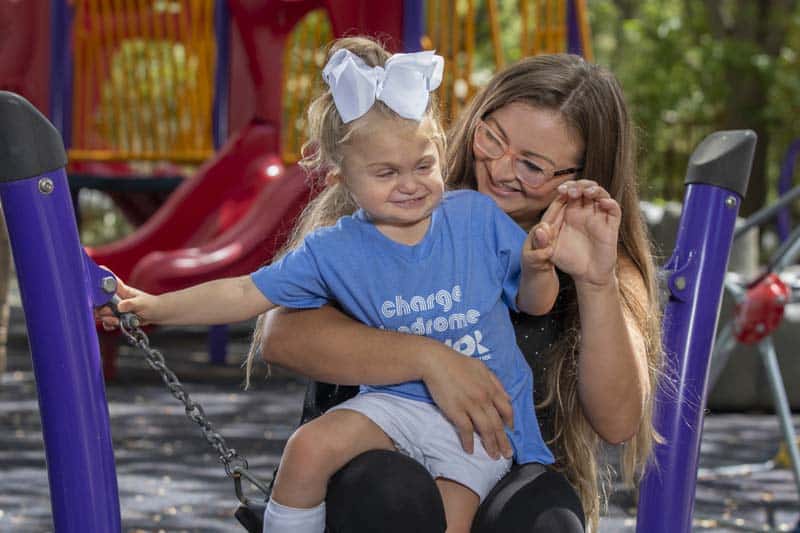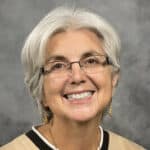Liliana CHARGEs Forward During National Birth Defects Awareness Month
This January, parents like Katrina reflect on their journeys with their children who have birth defects.
For Katrina, it started with the birth of her first-born child, Liliana. Katrina went over her due date.
“It was a very difficult labor,” Katrina recalls.
Lily swallowed meconium, baby’s first bowel movement, in utero, so a neonatal intensive care unit nurse was nearby to swiftly suction her. Katrina had a shortened umbilical cord and her blood pressure dropped dramatically. She was hemorrhaging and taken straight to the operating room, nearly needing her uterus removed. Luckily, she recovered.
Then came the news about Liliana.
“Lily’s anomalies were starting to add up,” Katrina explains.
She had a floppy ear, four heart defects, she failed her newborn hearing screening and had facial palsy (crooked smile). Liliana would need genetic testing. Katrina, who lives in Sarasota, quickly learned that they would be spending a lot of time at Johns Hopkins All Children’s Hospital in St. Petersburg, Florida.
“Once we got home and had regular check-ups with our pediatrician Patricia Blanco, M.D., we continued to get more referrals for her anomalies,” Katrina says.
Blanco discovered that Lily has CHARGE syndrome, a rare disorder, which affects multiple parts of the body. CHARGE is an acronym that stands for coloboma (structure of the eyes), heart defects, atresia choanae (also known as choanal atresia), growth retardation, genital abnormalities and ear abnormalities. It affects about 1 out of every 10,000 live births.
“It is very rare, but I’ve diagnosed a few others,” Blanco says. “Lily is the first I’ve taken from birth and step by step and seen her grow up.”
Children with CHARGE syndrome can have a range of diagnoses, but for Lily, her medical complexities are mainly gastrointestinal and brain-related. She also qualifies as dual impairment, being completely deaf and visually impaired. Lily is now 6 years old and to date has seen more than 35 different doctors, including 17 specialists. She has also received anesthesia more than 20 times for surgeries, including an emergency surgery, and various procedures.
“The amount of blood work, X-rays, infusions and Emergency Center visits is crazy. There’s so much going on, medically, physically, developmentally, on top of the multi-sensory impairments,” Katrina says.
Blanco says Lily is coming along nicely and attributes that to Katrina’s dedication as her mom.
“If you're around Lily for any period of time, you get to know her persistence. She's had to overcome so many things,” Blanco says. “Katrina is responsible for how far Lily has come, she's constantly on the floor playing, getting her to learn, communicate and now Lily is starting to walk and communicate and make some of her wants and needs known.”
Katrina is proactive in educating herself about CHARGE syndrome, learning American Sign Language and attending conferences. Although there are many doctor appointments, therapy sessions and hospital visits ahead, Katrina is continually motivated by her baby girl, who will soon become a big sister.
“I just love her so much; she is everything to me. She can't communicate her needs, but she’s so strong and so happy. She's amazing and a super inspiration for me,” says Katrina.
Dr. Patricia Blanco specializes in pediatric medicine at the Johns Hopkins All Children’s Outpatient Care location in Sarasota, Florida. She has worked as a pediatrician in the Sarasota area since 2001. Dr. Blanco also is a clinical assistant professor for both the University of South Florida College of Medicine and the Florida State University College of Medicine. Dr. Blanco earned her medical degree from the USF College of Medicine and trained in the USF Health Residency Program at Johns Hopkins All Children’s Hospital.
*Presented by Johns Hopkins All Children's Hospital | Originally published in January 2023 of Tampa Bay Parenting Magazine.



